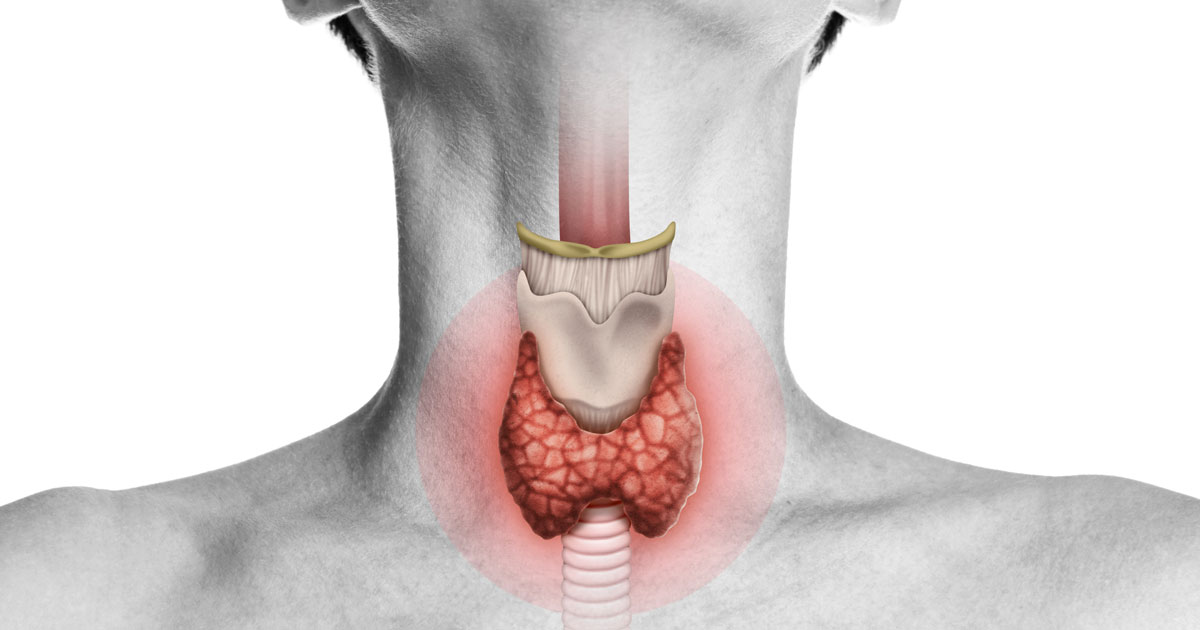Did you know that our metabolism controls over 1300 different enzymes in our body and is maintained by our thyroid?
What is your metabolism?
Contrary to popular belief, our metabolism does not just help to control our weight. It is involved in over 1300 enzymatic processes, all of which, help to maintain the normal functioning of the body including supporting energy levels, body temperature, hair/nail growth, and more.1,2
You may have heard of people talking about having a “slow metabolism” as they find it easy to gain weight but struggle to lose it. The reason for this is partly true as the role of our metabolism is to prepare energy from the food we eat. So, if our metabolism isn't functioning properly it may lead to unplanned weight gain/weight loss.
Even at rest, our body uses energy for breathing, growing, repairing cells, and maintaining our hormone levels. This energy used by the body during rest is known as your basal metabolic rate, which may naturally decrease as we age.3
The Thyroid Gland
The thyroid is a butterfly-shaped gland located in the front of the neck. One of the main functions of this gland is to help regulate our metabolism and has a major role in the growth and development of our body.4 
What’s the link?
The thyroid creates two thyroid hormones T3 (triiodothyronine), an active form, and T4 (thyroxine), an inactive form. The T4 hormones are transported around the body, depending on where it is needed where the trace element selenium then converts into T3 to be used.
These hormones influence every cell in our body and maintain our metabolism by instructing the cells how much energy to use. During situations where our energy demands increase, for example during pregnancy, the thyroid gland produces more of these hormones to help in the development and growth of the fetus.5
Speaking of selenium
Selenium is an essential mineral, meaning we only need it in small amounts. Even though this is the case, these small amounts are essential for our health.
In the case of thyroid function, selenium contributes to its normal functioning. It is needed for the creation of “selenoproteins” which are proteins that all have different roles in the body, at least two of which are related to thyroid function. They turn the inactive thyroid hormone into the active form to be used in the body and it has a protective effect on the thyroid gland, contributing to the protection of cell damage.6
Even with a balanced diet, studies have shown that as a population we do not consume enough selenium due to the poor nutrient soil quality.7 This shows how important it is to maintain selenium levels in the body, through both dietary sources and supplementation.
References
1. Romero P, Wagg J, Green ML, Kaiser D, Krummenacker M, Karp PD. Computational prediction of human metabolic pathways from the complete human genome. Genome Biology. 2005;6(1):R2. doi:10.1186/gb-2004-6-1-r2
2. Sánchez López de Nava A, Raja A. Physiology, Metabolism. 2021 Sep 20. In: StatPearls [Internet]. Treasure Island (FL): StatPearls Publishing; 2022 Jan–. PMID: 31536296
3. Shimokata H, Kuzuya F. Aging, Basal Metabolic Rate, and Nutrition. Nippon Ronen Igakkai Zasshi Japanese Journal of Geriatrics. 1993;30(7):572-576. doi:10.3143/geriatrics.30.572
4. Mullur R, Liu YY, Brent GA. Thyroid Hormone Regulation of Metabolism. Physiological Reviews. 2014;94(2):355-382. doi:10.1152/physrev.00030.2013
5. Singh S, Sandhu S. Thyroid Disease And Pregnancy. 2022 Jul 19. In: StatPearls [Internet]. Treasure Island (FL): StatPearls Publishing; 2022 Jan–. PMID: 30860720.
6. Ventura M, Melo M, Carrilho F. Selenium and Thyroid Disease: From Pathophysiology to Treatment. International Journal of Endocrinology. 2017;2017:1-9. doi:10.1155/2017/1297658
7. Mayer AMB, Trenchard L, Rayns F. Historical changes in the mineral content of fruit and vegetables in the UK from 1940 to 2019: a concern for human nutrition and agriculture. International Journal of Food Sciences and Nutrition. 2021;73(3):315-326. doi:10.1080/09637486.2021.1981831

